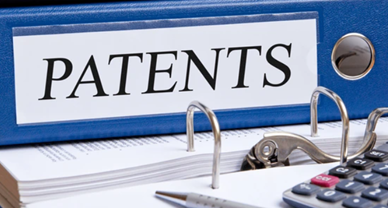Timing the Patent Clock: How Soon Should You File in India?
In India, it is important to align the filing of patent applications with strategic choices in the changing ecosystem. Filing a patent application too early or too late can be a major topic of confusion among innovators. Applying too soon may produce inadequacies regarding the disclosure of the invention and jeopardise the patent’s validity, and on the other hand, applying it with a delay can result in losing its priority in the competitive industry. Priority is guaranteed with an early application, yet it may fail to capture the core of the invention. The availability of Fast-track examinations in India emphasises the importance of correct timing, enabling innovators to speed up their applications and award them advantages in competitive industries. Therefore, it is crucial to understand this timeline to apply for the patent to its advantage. In addition to the key legal framework, this article discusses the consequences of the gap of 12 months between the provisional and final application.
Patent Filing in India: Legal Frameworks
The Patents Act of 1970 and the Patent Rules of 2003 deal with patent filing, framing the foundation of the IP laws in India. These legal instruments allow individually tailored patent applications regarding the specific requirements of the innovators and organisations.
- Provisional Specifications: The innovator may secure early priority dates for its invention, being in the development stage.
- Complete Specifications: The innovator has to comprehensively disclose its invention within a 12-month timeline, accompanied by the provisional application filed by the innovator.
- PCT National Phase Application: It is to be filed within 30 months of the date of international filing of the patent, provided under the Patent Cooperation Treaty.
The filing and priority dates are crucial in the patent system because they establish the precedence of the concerned application when multiple applications claim the same subject matter. These dates determine the novelty and anticipation required for patentability under Sections 2(l), 13, and 29-34 of the Patents Act. This novelty assures the innovator that the invention is not made available in the public domain anywhere on the globe prior to the filing date. Anticipation guarantees that no previous publication/usage of the said invention is present, making it patentable. This framework assures procedural compliance along with substantive validity for intellectual property protection.
How Early is Too Risky: Risks of Premature Filing
Filing a patent prematurely to obtain the early priority date may invite consequences. One of the hazards is insufficient enablement and data availability, under Section 10 of the Act, demanding that the specifications be clearly and adequately disclosed for the invention and its method. Early filing of an application for the invention, even before its full development, may fail to fulfil these conditions. For instance, a startup may submit provisional specifications early to obtain priority, but lack sufficient technical data and operational prototypes. During the transition to complete specification, such a corporation may face difficulties and struggle to explain/support its claims, raising the possibility of rejection by the Patent Office due to lack of inventive step/enablement.

This can be further understood by the case of F. Hoffmann-La Roche Ltd. v. Cipla Ltd. (2008), which emphasises the importance of premature disclosure. In this case, the court explained the patent’s disclosure and requirement of demonstrating how the invention operates for patentability. Furthermore, early submission without a complete follow-up specification within the required period can result in abandonment of the application, wasting time and resources. Therefore, it is crucial to strategically timeline the submissions of the patent applications.
Advantages of Early Filing
Despite the hazards of early filing, it provides significant benefits in high-stakes, quickly expanding industries like artificial intelligence, biotechnology, and pharmaceuticals. It is advantageous in achieving an early priority date to effectively prevent rivals from acquiring similar ideas. This is also witnessed under the First-to-File rule, which is implemented in India under the TRIPS Agreement. Any public disclosure before the filing of the application, in journals, speeches, or internet material, might permanently impair the invention’s patentability. However, it further strengthens the company’s negotiation position. It could:
- Facilitate the Licensing Negotiations.
- Increase Investor Confidence.
- Increasing the Company’s Value.
Furthermore, it demonstrates strong technical leadership as a significant asset in mergers and acquisitions. Thus, the application must be carefully timed as a commercial strategy for innovators seeking to dominate future markets.
Fast-Track Patent Examination in India: When & Why to Use it?
India has established a Fast Track Examination for inventors’ changing demands under Rule 24C of the Patent Rules, 2003, enabling some of the applicants to accelerate the examination of the applications, decreasing the time in final determination from years to a few months.
Who is Eligible?
- Startups
- Small and Medium Enterprises (SMEs)
- Female applicants
- Government Departments
- Applicants choosing India as the International Searching Authority/International Preliminary Examining Authority under PCT.
- Entities eligible for bilateral agreements.
Why use it?
This is an important technique, especially in situations where the product is approaching its commercial introduction and there is an urgent financial opportunity. Situations where a quick patent award is necessary for licensing and enforcement.
In the historic case of Enercon (India) Ltd vs. Aloys Wobben, the economic expense of the delayed application process was highlighted where the court stressed up on the significance of the timely priority claims without prior public disclosure and its anticipation, which can invalidate the patentability of the invention. This decision reiterated that anticipation under Sections 29-34 of the Patents Act might emerge from any kind of disclosure, deliberate or unintentional, not preceded by an appropriate application.
Fast-tracking of inspections boosts investors’ trust in situations where the firm approaches ventures or goes through acquisitions. A patent awarded through an accelerated procedure may establish market readiness and protection against its rivals throughout the commercial rollout stage. In highly competitive industries where the development cycle is short, like biotechnology, pharmaceuticals, and software, a delay in obtaining patent protection may lower a firm’s value and result in missed market opportunities. Therefore, it is a strategic step to timeline the patent process utilising the fast-tracking system to sustain competitive advantage.
Therefore, it is impactful to file the patent application too soon or too late, primarily on the breadth, strength, and enforcement of rights within. Early applications enjoy priority as they curb the competition in the market and attract investments; however, if it is submitted too early, then the risk of rejection due to insufficient disclosure or not being entitled can be subjected by the person filing for the patent, under the ambit of Section 10 of the Patents Act, 1970. Contrarily, the delay in submitting the same may allow extensive data collection while increasing the risks of anticipation from disclosures among the public or by another similar application, as witnessed in the case of Enercon.
Fast-Track Examination under Rule 24C provides patent protection to innovators and entrepreneurs aligned with their business cycles, fundraising events, and product launches, which is used carefully with sector-specific strategies, local awareness, and international patent timelines. Therefore, working with an IP specialist from the early stage of the invention process allows the innovator to develop strategically balanced legal protection with economic feasibility. In India, managing the patent clock in this changing ecosystem is important and achieved through educated, proactive, and timely measures, complementing the balance between the market leadership and lost opportunities.
Author:–Devanshi Chaudhary, in case of any queries please contact/write back to us at support@ipandlegalfilings.com or IP & Legal Filing.
References
- https://doi.org/10.1080/10438599.2010.537897
- https://doi.org/10.37380/jisib.v8i2.322


